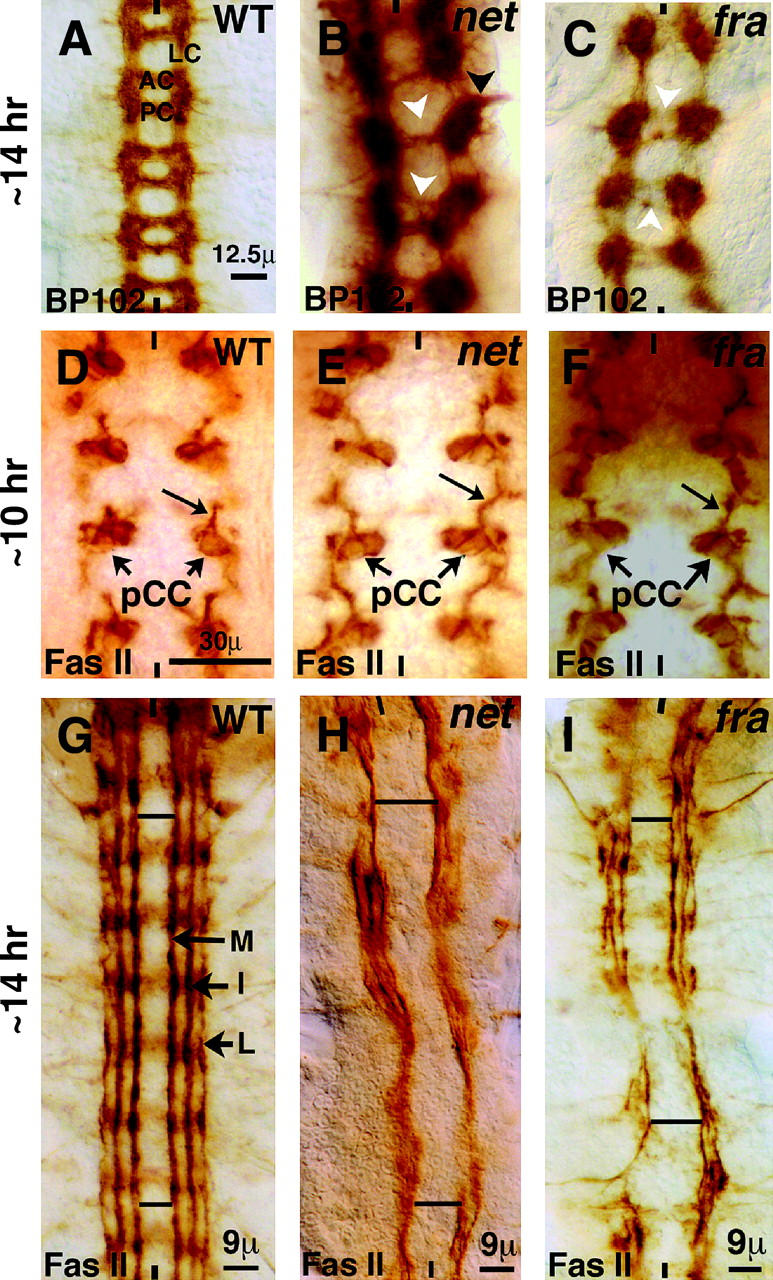Figure 1.—

Netrin-Frazzled signaling attracts longitudinal axon tracts toward the midline. Anterior side is up; midline is marked by vertical lines. Embryos are ∼14 hr old. WT, wild type. Embryos in A–C are stained with BP102; scale bar for A–C is given in A. (A) Wild type. BP102 stains the anterior commissure (AC), the posterior commissure (PC), and the longitudinal connectives (LC). (B and C) In net and fra mutants, the connectives are farther apart and the commissures are often missing, very thin (white arrowhead), or project outward (black arrowhead). Embryos in D–I are stained for Fas II; scale bar for D–F is given in D. (D) Wild-type embryo. Fas II stains pCC (arrow) and its projection (long arrow), which pioneers the medial tract. (E and F) net and fra mutant embryos. The projections from pCC are farther apart than in wild type. (G) Wild-type embryo. Fas II stains three major longitudinal tracts, medial (M), intermediate (I), and lateral (L). (H and I) net and fra mutants. These Fas II-positive pathways are farther away from the midline and are often disorganized or missing in regions along the tract (see also Table 1).
